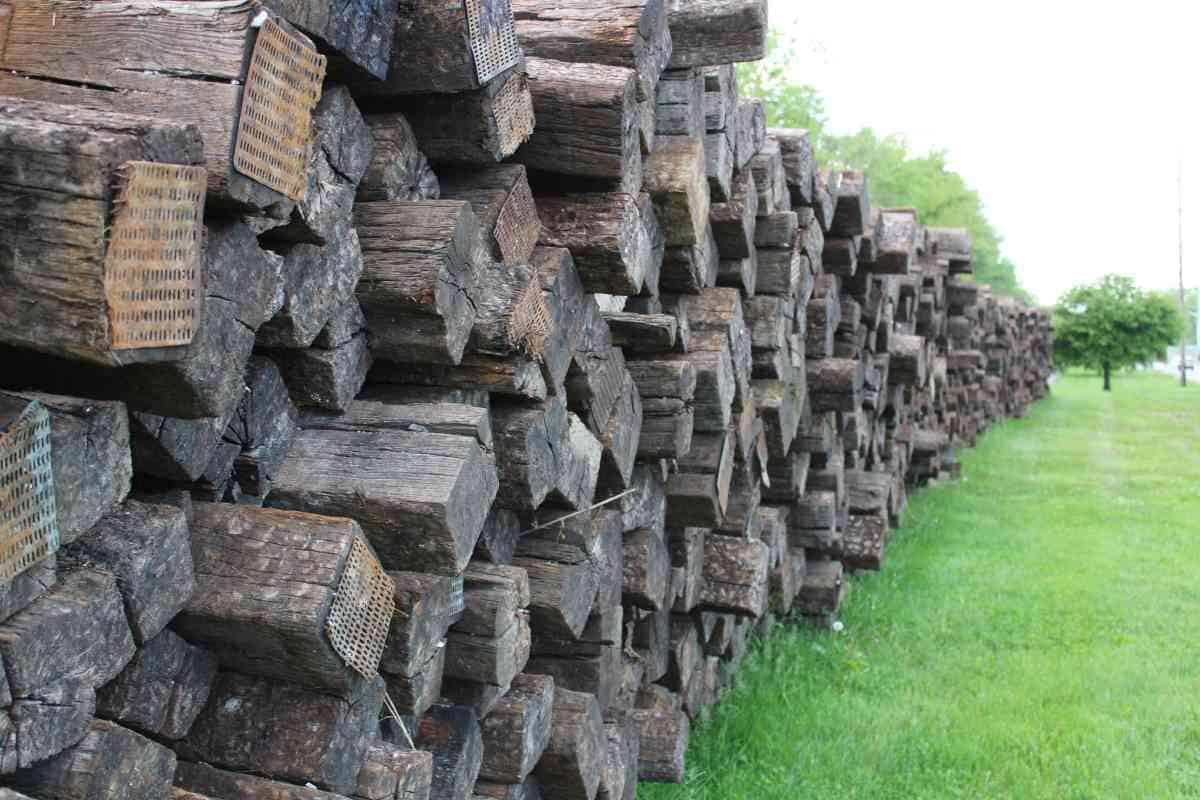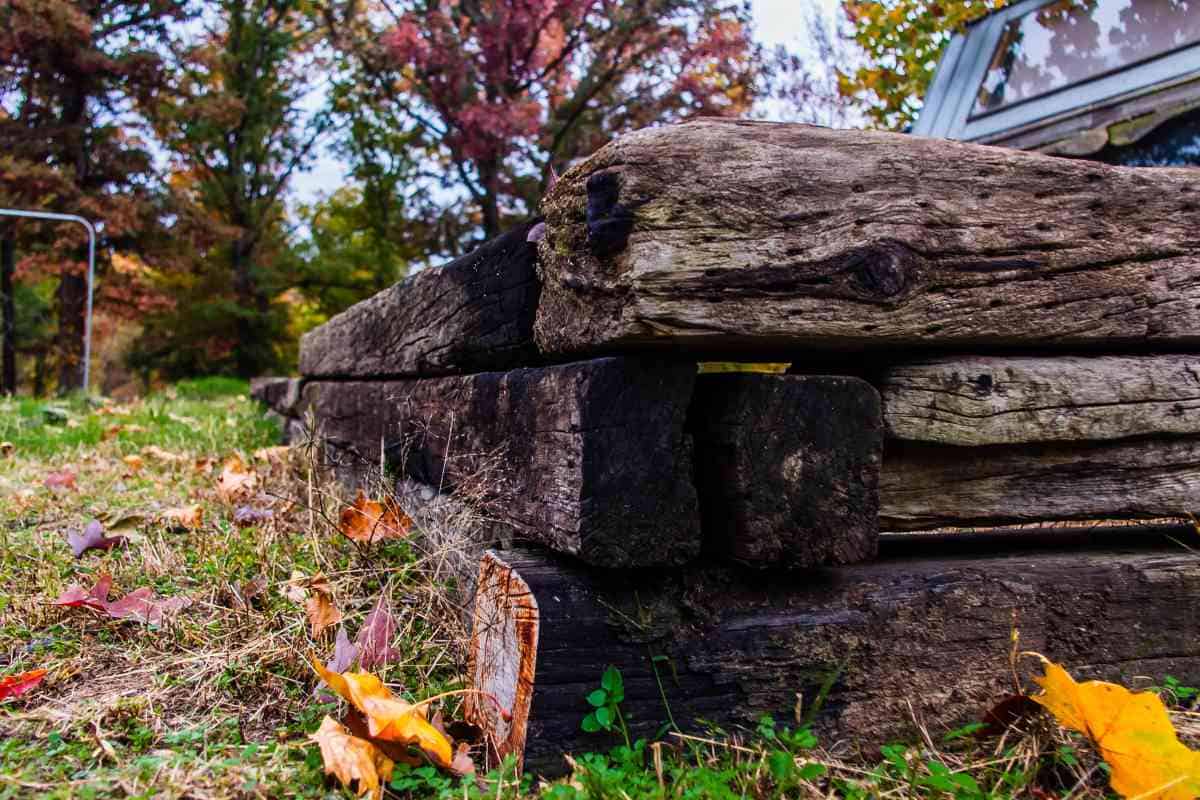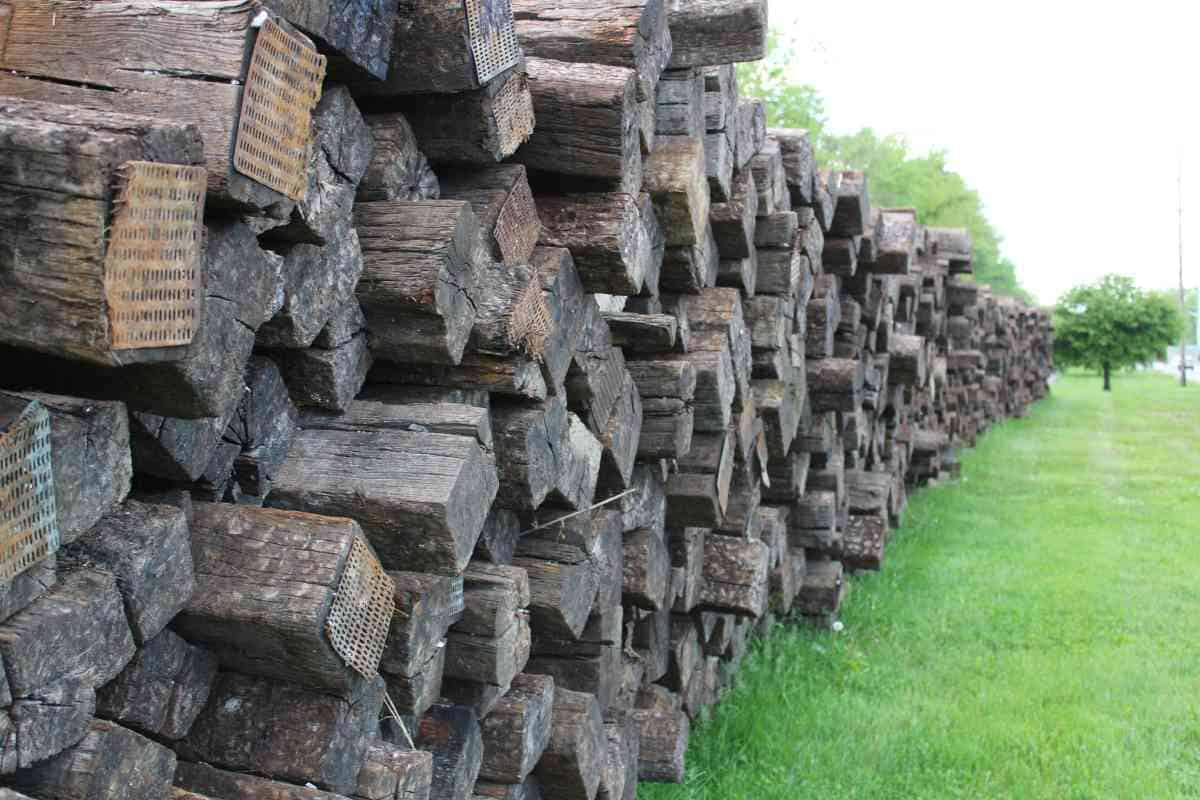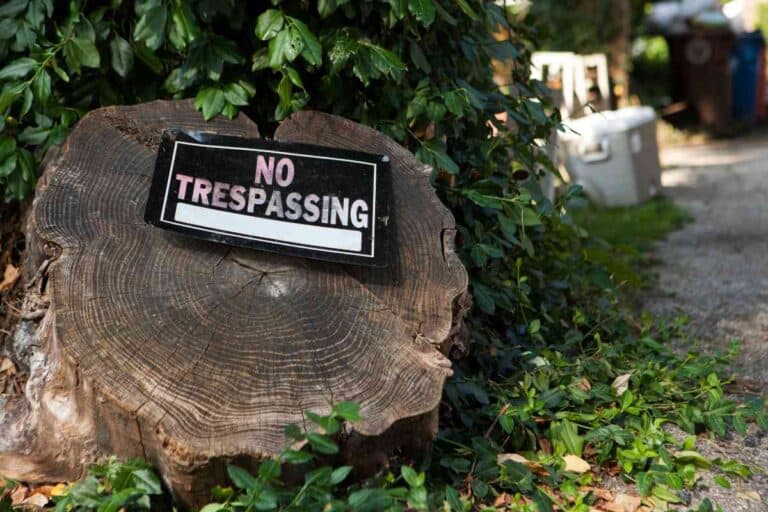Can I Burn Railroad Ties? Why Not? Solved!
The railroad ties are a critical component of the rail system. But can you burn railroad ties?

Is it safe to burn railroad ties?
No, railroad ties are not safe for burning. Railroad ties are both generally too big to fit in a firepit or fireplace without significant cutting -and are often soaked with creosote before used, making them capable of letting off some bad fumes.
Wood is a precious resource, especially for families that use firewood as fuel in winter. They can use it for cooking or warming their houses during the winter season.
The important thing for these households to know is which wood to use and which not to use.
Essentially, not every wood is good for burning. So, the big question is whether railroad ties and other landscape timbers are good for burning.
Well, railroad ties are not the ordinary wood you can find in a store or cut from your farm.
Just as the name suggests, these are large pieces of wood treated for a particular purpose, which is to ensure that rails are positioned well.
They are used to create an even gap between metal rails. For this reason, they are creosote-treated wood to enable them to be in good shape for a long time.
With the treatment, the chemicals allow them to stay strong for decades without rotting.
With this in mind, we’ll delve deeper to understand whether you can burn railroad ties.

What is a railroad tie?
I have to say that railroad tie is kind of a confusing term. It sounds more like a strap, piece, or even nail that would hold the horizontal pieces of wood or metal to the track.
A railroad tie actually refers to the pieces of wood that make the outside of the track that have individual tracks between them. These pieces of wood tend to be a few feet long.
In case you are wondering why you would burn railroad ties, the answer is easy: Railroad ties are often given away because cities and people tear up railroad tracks to replace them.
The wood is often posted for sale on places like Facebook or craigslist for cheap, or even free, in part because they are big and difficult to store – and sometimes covered in a substance called creosote, which will start talking about soon.
Why You Shouldn’t Burn Railroad Ties
From the onset, it’s important to reiterate that railroad ties are usually treated with chemicals (creosote) to allow them to be in good condition for a long time.
Through this, they are able to overcome harsh weather conditions and be in use for a longer time.
So because of this, they are not safe for burning. If you burn railroad ties, they usually produce large amounts of smoke that are toxic for your family and even neighbors.
One of the things that you should be careful about when burning wood is the toxic chemicals and wood preservatives in the smoke that may come out of it.
That’s why it’s advisable to use well-seasoned wood whenever you’re burning firewood.
Smoke is harmful to the health of the people around a fireplace or stoves. If you burn treated railroad ties, the chemicals inside the wood will be released into the air and be a danger to those who inhale them.
With this in mind, it’s not safe to burn railroad ties.
Can I clean creosote off wood?
Between solvents and other cleaning materials, you could remove creosote from wood.
We’ll also put it out there, in our opinion, that it might not be worth your time and effort to attempt to clean the wood – and just buy or find regular firewood instead.
Doesn’t creosote build up in fireplaces?
Creosote can be a significant source of build up – and air restriction within your fireplace and lead to an inability to start a fire safely.
There are also produces and methods made to remove creosote from a chimney to allow air to move more freely.
Cleaning creosote can also be a pain because it can result in irritation of the eyes and skin. Usually, professionals or do-it-yourselfers with tools and experience are the best options to clean creosote out of a chimney.
The presence of creosote comes from the incomplete burning of treated wood. The best method to avoid a creosote buildup is to only burn seasoned, dry wood that is not treated. This of course includes not burning creosote-laden railroad ties.
The fact that creosote is considered detrimental to fireplaces – just as a result of burning less than optimal good – tells you what you need to know about burning creosote treated wood in the first place.
Can you Burn Untreated Railroad Ties?

For residential areas, the only railroad ties you can burn are the untreated ones.
Burning treated railroad ties is a health risk you don’t want to take, especially if there are children and the elderly around.
These are vulnerable populations who should be protected from hazardous materials.
If you happen to have untreated railroad ties, you can go ahead and burn them just as you would for any other recommended wood.
A point of caution when burning untreated railroad ties is to always remove all non-wood items such as nails and screws before burning the wood.
How to Protect Yourself when Handling Treated Railroad Ties
The U.S. Environment Protection Agency gives guidelines to homeowners on how to handle treated railroad ties.
Since these woods are toxic, those who handle them should follow the guidelines provided to avoid jeopardizing their health.
One of the guidelines from the agency is that homeowners should avoid burning treated railroad ties.
Burning these pieces of wood in fireplaces, woodstoves, or boilers is a bad idea. There is a high possibility that the smoke and ash produced from the burning is toxic.
The chemicals produced are highly harmful to the respiratory system.
Thus, the principal guideline is that residential homeowners should not burn treated railroad ties.
Moreover, prolonged skin contact with treated railroad ties is dangerous. The authority advices people to avoid exposing their skin to these pieces of wood as the chemical can be harmful.
For this reason, anyone handling treated railroad ties should wear protective gloves, long-sleeved shirts, and pants that cover the body well. Of great importance still, make sure you wear goggles to protect your eyes whenever you’re cutting treated wood.
If the particles fly to your eyes, they can cause infections that may require medical attention. Avoid all that by covering your eyes with the appropriate protective gear.
It’s also important to wash clothes exposed to treated wood thoroughly to remove any particles that may be hazardous. These clothes should be washed separately from other clothes.
If you follow these guidelines, you’ll avoid exposing yourself and the people around you to the harmful chemicals stored in treated railroad ties.

How to Dispose of Railroad Ties Safely?
If you have railroad ties you would like to dispose of, it’s imperative to do it the right way.
From the outset, you should take note that burning them isn’t an option you should take, having known the repercussions of doing so.
Instead, you should go for the safe option. The best option for disposing railroad ties safely is sending them to a landfill.
Normally, these pieces of wood are large and can be problematic if you choose to handle them on your own.
Given that cutting them may also be a challenge, the best thing to do is to seek the services of a garbage company to handle them for you. They will ensure that the railroad ties reach a landfill for safe disposal.
Related Reading
- 4 Things To Consider Before You Light Mulch On Fire
- Can You Use Duraflame Logs In A Wood Stove?
- Are Wood Stoves Safe For Babies And Children?
- Why Is My Firewood Burning Blue And Green?
- Is It Okay To Burn OSB? Risks and Considerations
- The Ultimate Guide to Firewood: Types, Preparation, and Storage
- Using Walnut For Firewood: Tips To Make The Most Of It
- Tips For Using Poplar Wood For Firewood
Key Takeaways
- Railroad ties are not the usual wood you can burn for firewood at your home
- Usually, they are treated with chemicals to give them a longer life to serve their purpose.
- If you burn this type of wood, the chemicals released into the air are toxic and harmful
- Thus, treated railroad ties are not good for burning and should be handled with care






